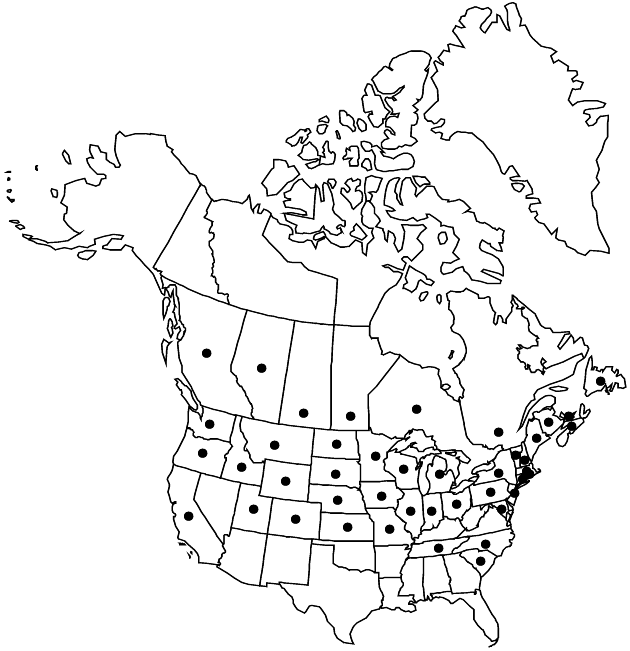Artemisia absinthium
Sp. Pl. 2: 848. 1753.
Perennials, 40–60(–100) cm (mat-forming), aromatic. Stems gray-green (sometimes woody proximally), densely canescent to glabrescent (hairs appressed). Leaves deciduous, gray-green; blades broadly ovate, 3–8 × 1–4 cm, mostly pinnately lobed (basal 2–3-pinnatifid, lobes obovate), faces densely canescent. Heads (nodding) in open (diffusely branched), paniculiform arrays 10–20(–35) × (2–)10–13(–15) cm. Involucres broadly ovoid, 2–3 × 3–5 mm. Phyllaries gray-green, densely sericeous. Florets: pistillate 9–20; bisexual 30–50; corollas 1–2 mm, glandular. Cypselae (± cylindric, slightly curved, obscurely nerved), ± 0.5 mm, glabrous (shiny). 2n = 18.
Phenology: Flowering mid summer–fall.
Habitat: Widely cultivated, persisting from plantings, disturbed areas
Elevation: 0–1000 m
Distribution

Introduced; Alta., B.C., Man., N.B., Nfld. and Labr. (Nfld.), N.S., Ont., P.E.I., Que., Sask., Calif., Colo., Conn., Idaho, Ill., Ind., Iowa, Kans., Maine, Md., Mass., Mich., Minn., Mo., Mont., Nebr., N.H., N.J., N.Y., N.C., N.Dak., Ohio, Oreg., Pa., R.I., S.C., S.Dak., Tenn., Utah, Vt., Wash., Wis., Wyo., Europe.
Discussion
Artemisia absinthium provides the flavoring as well as the psychoactive ingredient for absinthe liquor, a beverage that is illegal in some markets. Known as a powerful neurotoxin, absinthe in large quantities is addictive as well as deadly. The species is popular in the horticultural trade. Prized by gardeners for its gracefully scalloped leaves and gray-green foliage, it creates an attractive and winter-hardy flower border.
Selected References
None.